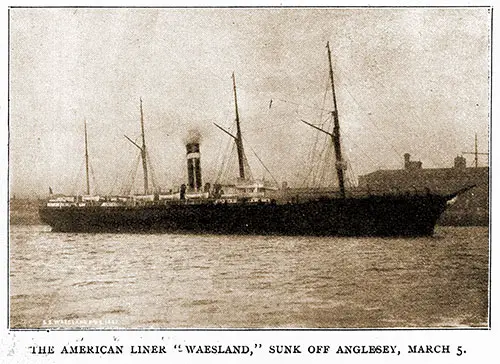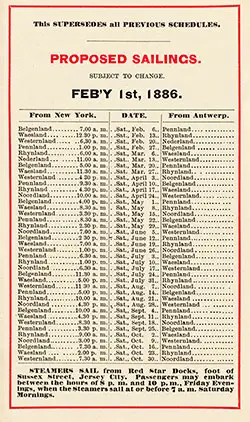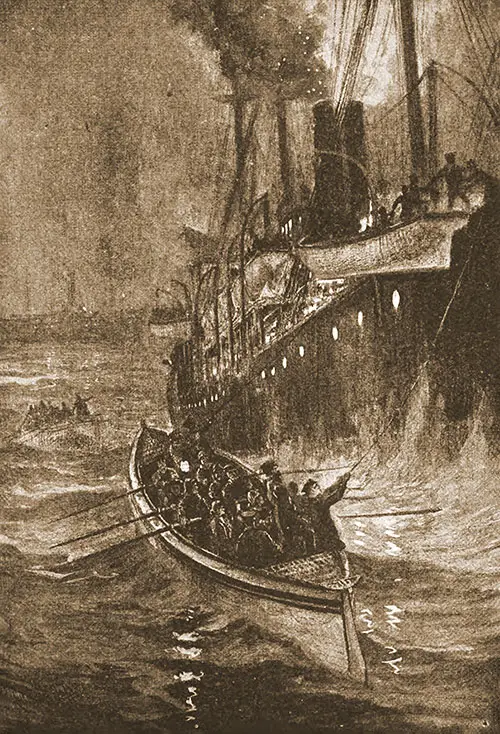SS Waesland Archival Collection

The American Liner Waesland, Sunk off Anglesey, Wales on 5 March 1902. The Illustrated London News, 15 March 1902. | GGA Image ID # 207e855fbc
Waesland (1867) Red Star Line
Built by J. & G. Thomson, Ltd., Clydebank, Glasgow, Scotland. Tonnage: 4,752. Dimensions: 435' x 42'. Propulsion: Single-screw, 14 knots. Compound engines. Masts and Funnels: Four masts and one funnel. Passengers: 100 first and 1,000 third. Modifications: Lengthened in 1880. Re-fitted with triple expansion engines in 1890. Ownership Transfer: Vessel was transferred to American Line's Liverpool-Philadelphia service in 1895. Fate: Lost in collision with Houstan steamship Harmonides off Anglesey, Wales in March 1902. Previously Named: Russia (1880).

Red Star Line Sailing Schedule, 6 February 1886 to 30 October 1886
The SS Waesland, operated by Red Star Line, was scheduled for transatlantic voyages between 6 February 1886 and 30 October 1886.
The "Waesland" Disaster - 1902

The SS Waesland's Lifeboats Got Away from the Sinking Liner in a Highly Creditable Fashion. The Vessel Then Settled Very Deep into the Water. As the Last Ship Moved Away, Two Men Left behind Were Rescued. The Decks Were Then Almost Awash with the Sea. As the Boats Made Away from the Vessel, the Ss Harmonides Became Shrouded in Fog, the Half-Clad Passengers Being Exposed for Some Hours in the Boats before Finding the Ss Harmonides by Her Fog Horn's Welcome Sound. Drawn by C. J. de Lacy. The Sphere, 15 March 1902. | GGA Image ID # 207e98d76a
A collision occurred between the Houston liner Harmon ides and American liner Waesland in a dense fog off the Anglesey coast at about midnight on Wednesday, March 5. Forty minutes after the crash, the Waesland sank.
So excellent was the spirit displayed on board both vessels, and the order preserved that all the 114 passengers on the Waesland were saved except two, as were all the crew, who numbered an additional eighty-nine. While the No. 1 lifeboat, which had placed twelve passengers, was lowered, the stern slipped from the davits and left the boat hanging perpendicularly.
All on board were thrown into the sea except one man named Dangerfield, whose head got fatally crushed against the side of the ship. The immersed persons were all rescued from the waves except one little girl named Emmett.
The other boats, ten in number, safely transferred their passengers from the Waesland to the Harmon ides, which was invisible in the fog but which industriously made her whereabouts known by whistles and signals.
The Waesland was formerly the Cunard steamer Russia. She was built in 1867 for the service of that line and was taken over in 1883.
"The Waesland Disaster," in The Illustrated London News, 15 March 1902, p. 381.
